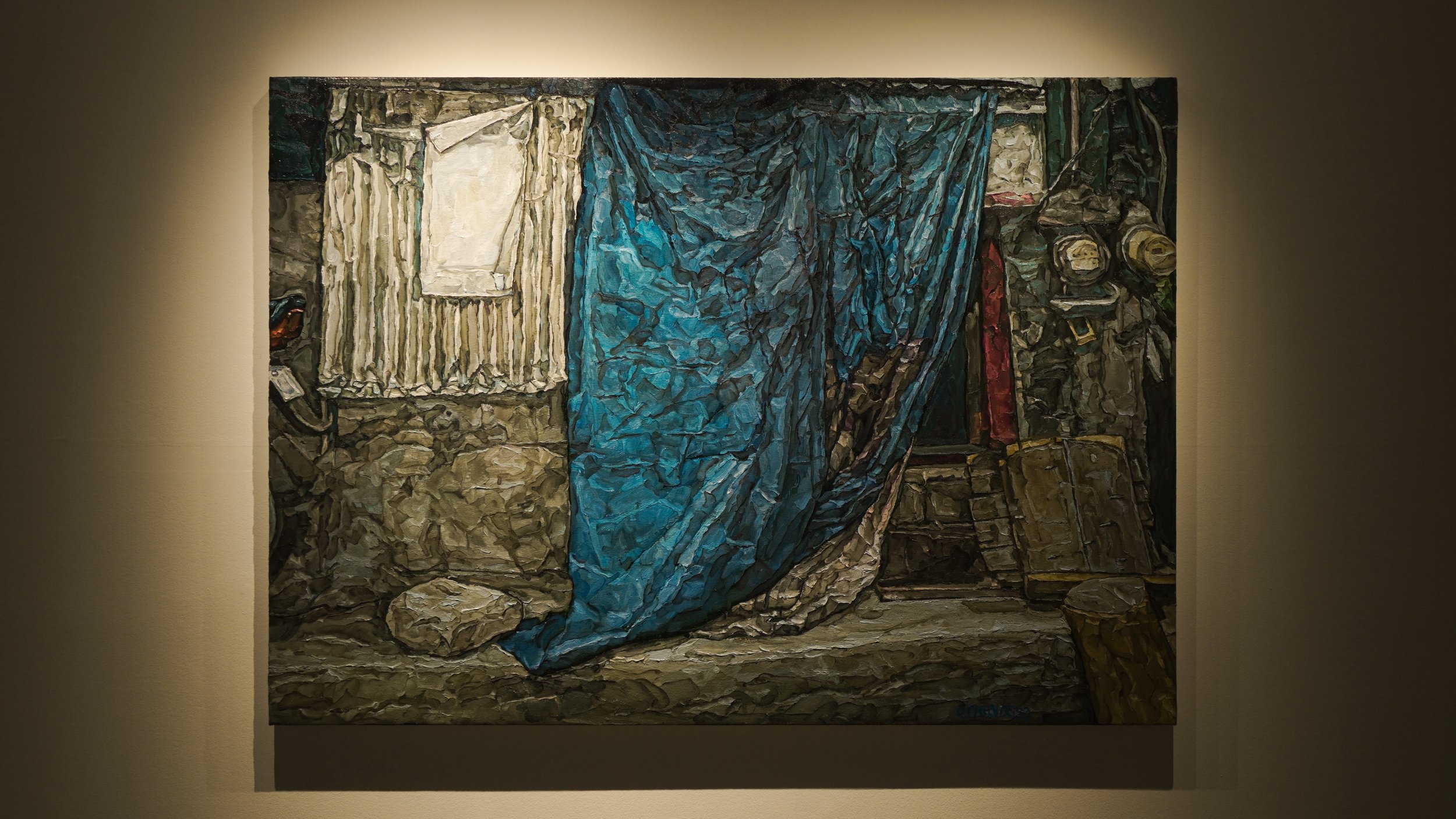Elaine Navas’ Acts of Abstraction
In Elaine Navas’ current exhibition at Artinformal Makati titled Found Objects, she applies Duchamp’s philosophy of reconsidering and revitalizing mundane objects to her meticulous practice of painting.
Written by Sean Carballo
July 27, 2023
Popularized by Duchamp in the early twentieth century, the found object foisted the status of art upon ordinary things, furnishing them with an air of contemplation and depth. As an art object, Duchamp’s porcelain urinal stood on its own – this mass-produced, distasteful thing – as a reminder that art, too, is something we piss on. A found object, at least in Duchamp’s case, could return us to a social history, the absurdities of the modern age, and give us room to contemplate its everyday-ness in ways startling and stimulating.
In Elaine Navas’s current exhibition at Artinformal Makati titled Found Objects, she applies Duchamp’s philosophy of reconsidering and revitalizing mundane objects to her meticulous practice of painting. Her works sit at the knife’s edge boundary between abstraction and figuration, blurring their boundaries to create forms all her own. It is through this technique – the work of channeling shiftiness and flux in the midst of life’s solidities – that Navas has found a method to unravel her own found objects.
The exhibition consists of three paintings of considerable size, each one possessing oblique, cheeky names. With their evocative palette of greens, blues and blacks, the pieces featured in Found Objects bid us to reflect on the work of perception, the motions of looking itself. Seeing a piece of tarpaulin cover a cage-like structure, as in “Drama Queen,” we are brought into a world that threatens to dissipate at any time. The tarpaulin covering in the work serves as both shield and obfuscation, and through Navas’s elusive handling of paint, we are led closer to each brushstroke, attentive to errant forms that may materialize out of the blue. Despite the show’s title, a big part of its fun is getting and staying lost.
Elaine Roberto-Navas, “Drama Queen,” 2023.
Previous works of Navas, as showcased in 2019’s Little Monuments and 2022’s What Did The Tree Learn From The Earth To Be Able to Talk With The Sky, pursued explicitly natural subject matter: branches and roots of trees, a bowl brimming with fruit. In those works, Navas angled her eager gaze to light and its various registers, deploying splotches of color and traces of ink to create an immersive and expressive sense of depth. Found Objects is relatively more subdued in its approach yet just as affecting. “Astig” depicts a close-up of blue-tinged bricks on a wall as they transform into a distorted drip of white. Form follows feeling: the instability of Navas’s imagined structure proposes its own kind of forlorn, chilling logic.
Elaine Roberto-Navas, one of her works installed for Found Objects (2023).
Navas once described her works as “accidental abstractions.” It is an accurate descriptor, highlighting all at once the elements of chance, play, and intuition which guide Navas’s hand. These three new works reflect an intent to rouse our imagination, nudging our awareness to the labored yet satisfying motions of painting—that slow entanglement making permeable painter, painting, and viewer. As time patiently unfolds inside this unassuming, quiet show, Navas reminds us that art, too, constantly partakes in the process of being found.




